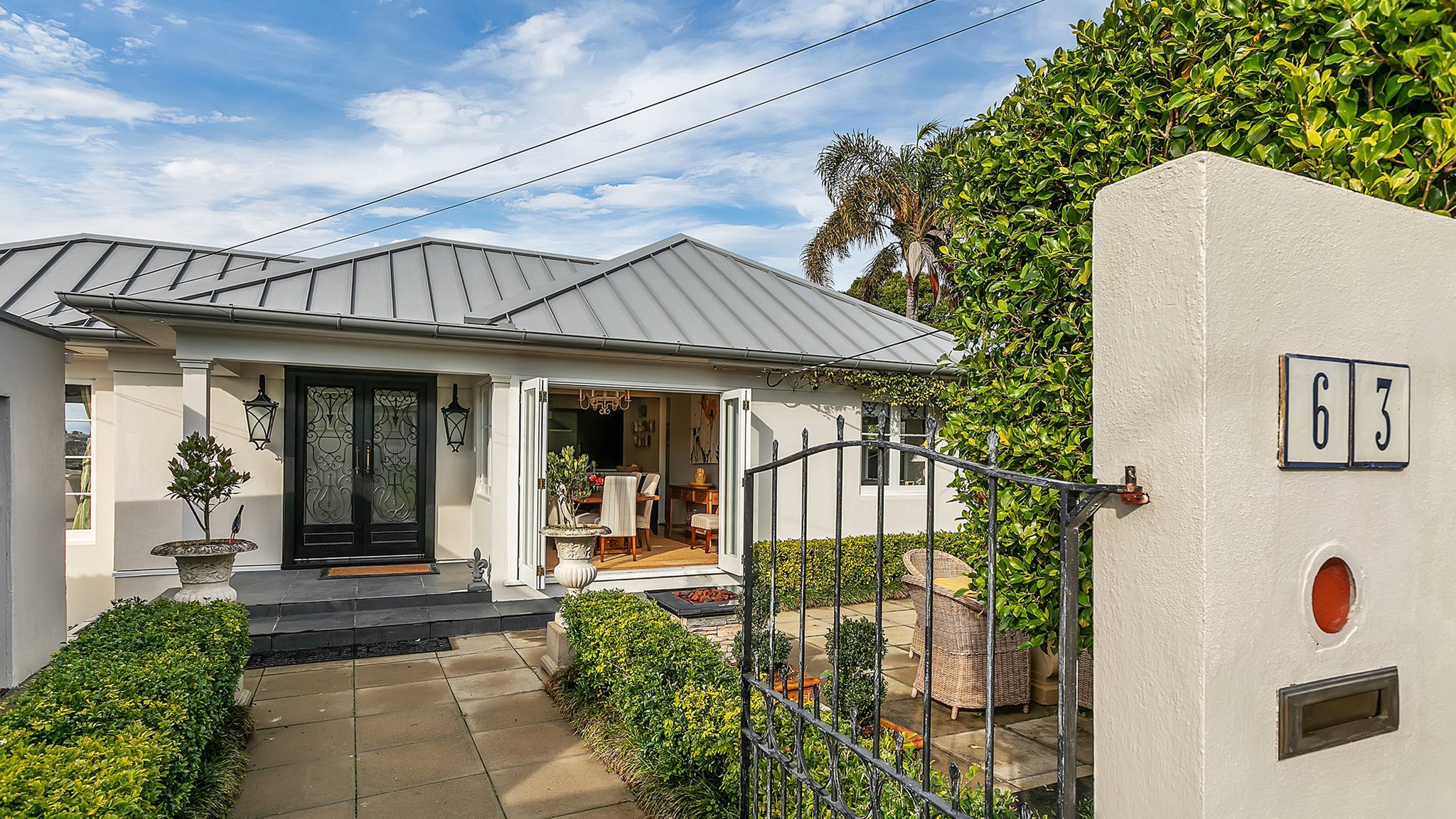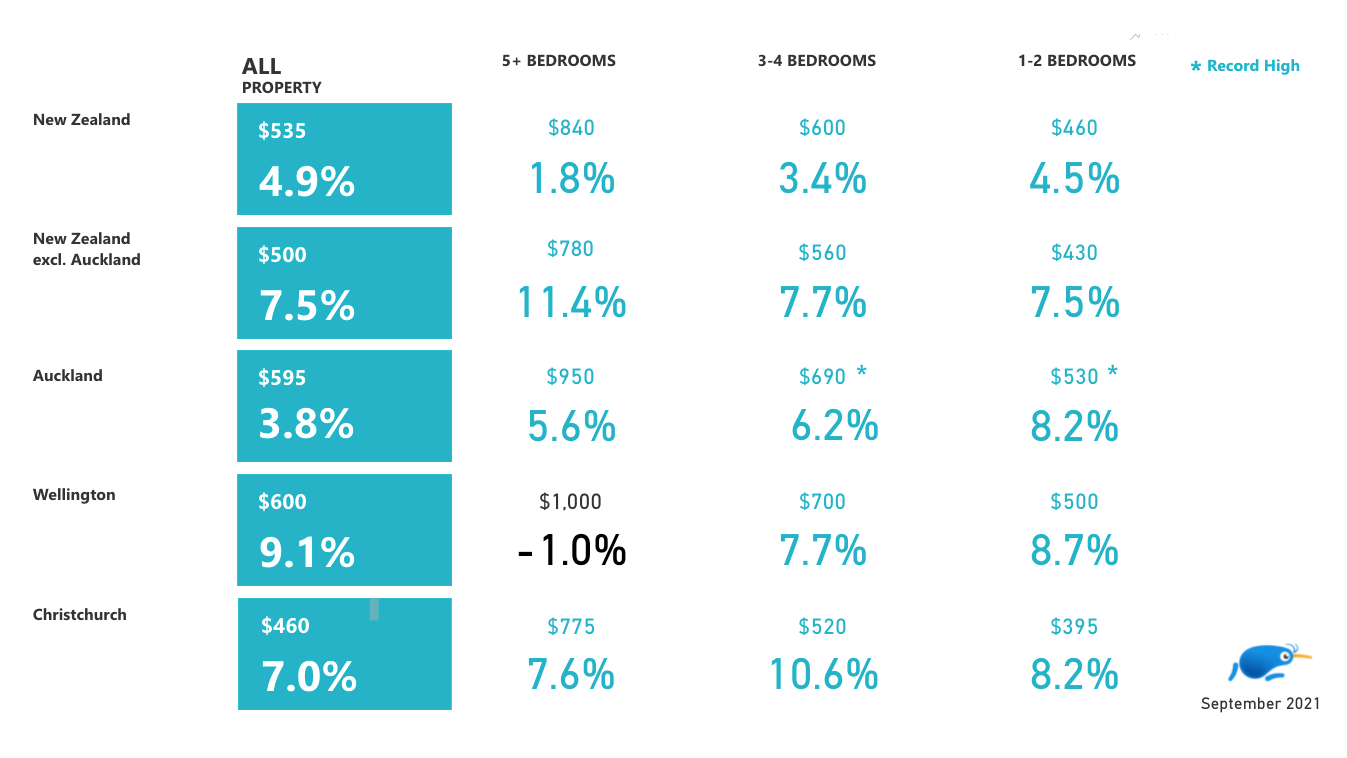News Next article
Rental Price Index - September 2021
New Zealand's national median weekly rent was $535 in September.
1 November 202163 Ngataringa Road, Devonport
New Zealand's national median weekly rent was $535 in September, showing a month-on-month drop for the first time in eight months, according to Trade Me’s latest Rental Price Index.
Trade Me Property Sales Director Gavin Lloyd said September’s national median weekly rent fell by $15 when compared with the month prior. “The lockdown brought the country to a halt in August which, unsurprisingly, sent shockwaves through the rental market and as a result we saw rents stall in our two main centres in September. This will come as welcome news for tenants who have become accustomed to record-breaking rent increases over the last 12 months.”
However, Mr Lloyd did acknowledge that the national median rent had still increased 5 per cent on the year prior. “This is the smallest year-on-year percentage increase we have seen in six months, and the first time we have seen this rate of growth slow since February.”
Mr Lloyd said while Trade Me Property’s September data may appear to show rents slowing in response to Covid-19 alert level restrictions, he stressed that time will tell if this trend will last. “It’s too early to see the full impact of August’s nationwide lockdown on the rental market, but what we have seen is that market activity didn’t bounce back in September.
“Nationally, demand was down by 14 per cent year-on-year in September. However, if we look at different regions around the country, it was not the same story across the board.” Mr Lloyd said Marlborough (up 43%), Canterbury (up 35%), and Manawatu (up 27%) all saw demand for rentals increase last month when compared with September last year.
“Unsurprisingly, the locked-down region of Auckland saw a drop in the number of enquiries on rental listings , with demand down by 39 per cent year-on-year. Hawke’s Bay (-24%) and Southland (-13%) also saw demand drop off.”
Mr Lloyd said when it comes to supply, the number of properties on the rental market was also down by 20 per cent in September when compared with the same month last year. “Every region saw an annual drop in the number of properties listed onsite last month.”
Looking ahead, Mr Lloyd said the coming months would be telling in how the lockdowns have impacted the rental market. “We have seen rents climb consistently since the beginning of last year, unscathed by the various Alert Level changes, the next few months will be really interesting and we may see this lockdown have a deeper impact on the rental market than any other lockdown.”
Auckland rents stagnant at $595 for third month
In the Auckland region, the median weekly rent in September remained at $595 for the third month in a row in September. “As Kiwis in the Auckland region remain on hold with the Alert Level restrictions, the rental market has followed suit with rents on ice.”
Looking at Auckland City alone, the median weekly rent was $580. “The most expensive district in the region last month was North Shore City ($620), with Franklin, Manukau, and Rodney all sitting slightly lower at $600.”
| District | Median Weekly Rent | ||
|---|---|---|---|
| North Shore City | North Shore City | $620 | $620 |
| Franklin | Franklin | $600 | $600 |
| Manukau | Manukau | $600 | $600 |
| Rodney | Rodney | $600 | $600 |
Mr Lloyd said demand in the Auckland region was down by 39 per cent year-on-year. “Supply in the region was also down by 24 per cent when compared with September 2020 as Covid-19 restrictions continued to heavily impact market activity.
“September’s most popular rental listing in Auckland was a three-bedroom house on Waiohua Road in Greenlane with a weekly rent of $650. It received 104 enquiries in its first two days onsite.”
Wellington rents steady at $600
The median weekly rent in the Wellington region was $600 in September for the second month in the row, up 9 per cent year-on-year. “Looking at Wellington City, the median weekly rent was also sitting at $600.”
Last month, Wellington City was bumped off the top three most expensive districts in the region for the first time on record. “Porirua ($680), Upper Hutt ($610) and Kapiti Coast ($605) were all more expensive than Wellington City in September.”
| District | Median Weekly Rent | ||
|---|---|---|---|
| Porirua | Porirua | $680 | $680 |
| Upper Hutt | Upper Hutt | $610 | $610 |
| Kapiti Coast | Kapiti Coast | $605 | $605 |
Reflecting the national trend, demand for rentals in the Wellington region in September was down by 6 per cent last month when compared with the same month in 2020, while supply was down by 2 per cent.
“The most popular rental in the country last month was a three-bedroom apartment on Telford Terrace, Oriental Bay, for $550 per week. The property received 191 enquiries in its first two days onsite.”
Record high rents for small and medium Auckland properties
Mr Lloyd said the national median weekly rent for all house sizes saw an annual increase in September. “Both small (1-2 bedroom) properties and medium (3-4 bedrooms) properties in Auckland reached a record high median weekly rent in September.”
National townhouse rents flat at $550
Urban properties saw rent increases across the board last month, with the exception of townhouses. ”The median weekly rents for urban properties (apartments, townhouses and units) in Wellington saw the largest year-on-year percentage change last month, up 8 per cent when compared with September last year.”
NOTES
- About the Trade Me Property Rental Price Index: This report provides a comprehensive monthly insight into the rental market covering price trends by type and size of property across New Zealand. The index is produced from Trade Me Property data of properties that have been rented in the month by property managers and private landlords. On average over 11,000 properties are rented each month and the report provides a comprehensive insight into this part of the property market for tenants, landlords and investors. The index is calculated using the rounded median rent in the month, this being an accurate statistical assessment of the current rent being charged by landlords and property managers.
- More info: For information about the differences between the Trade Me Property data and bond data collected by Tenancy Services, please read this post by Dr Lucy Telfar-Barnard from the University of Otago:
http://onetwothreehome.org.nz/2015/05/11/how-high-is-the-rent/
Other news you might like







